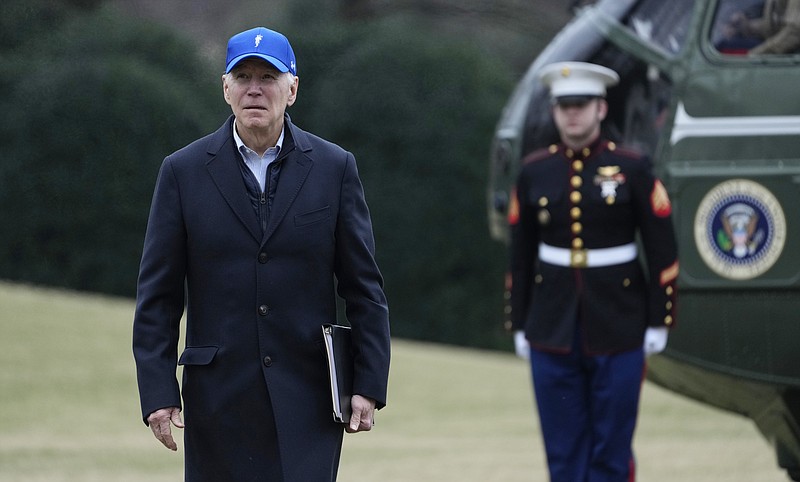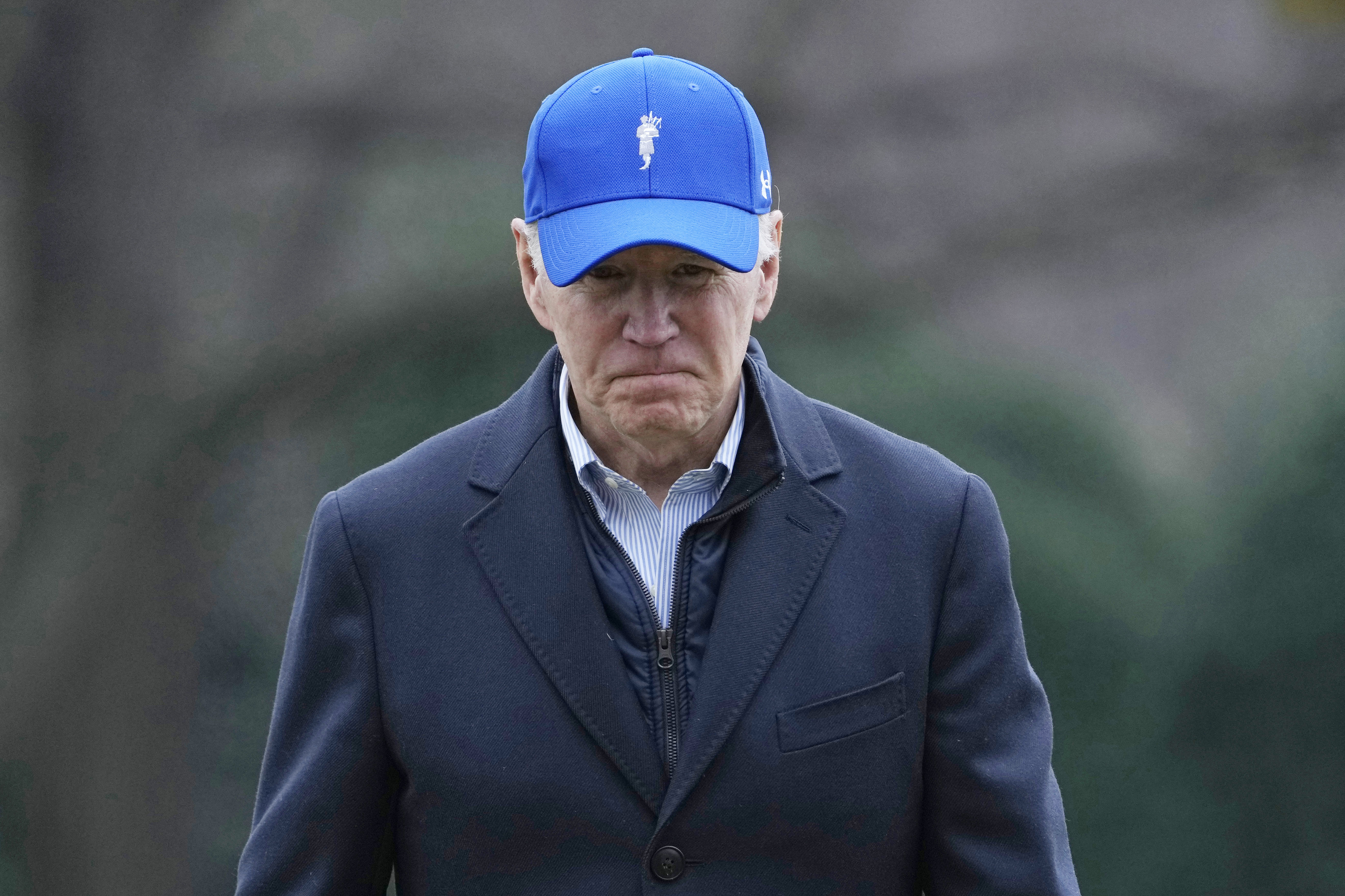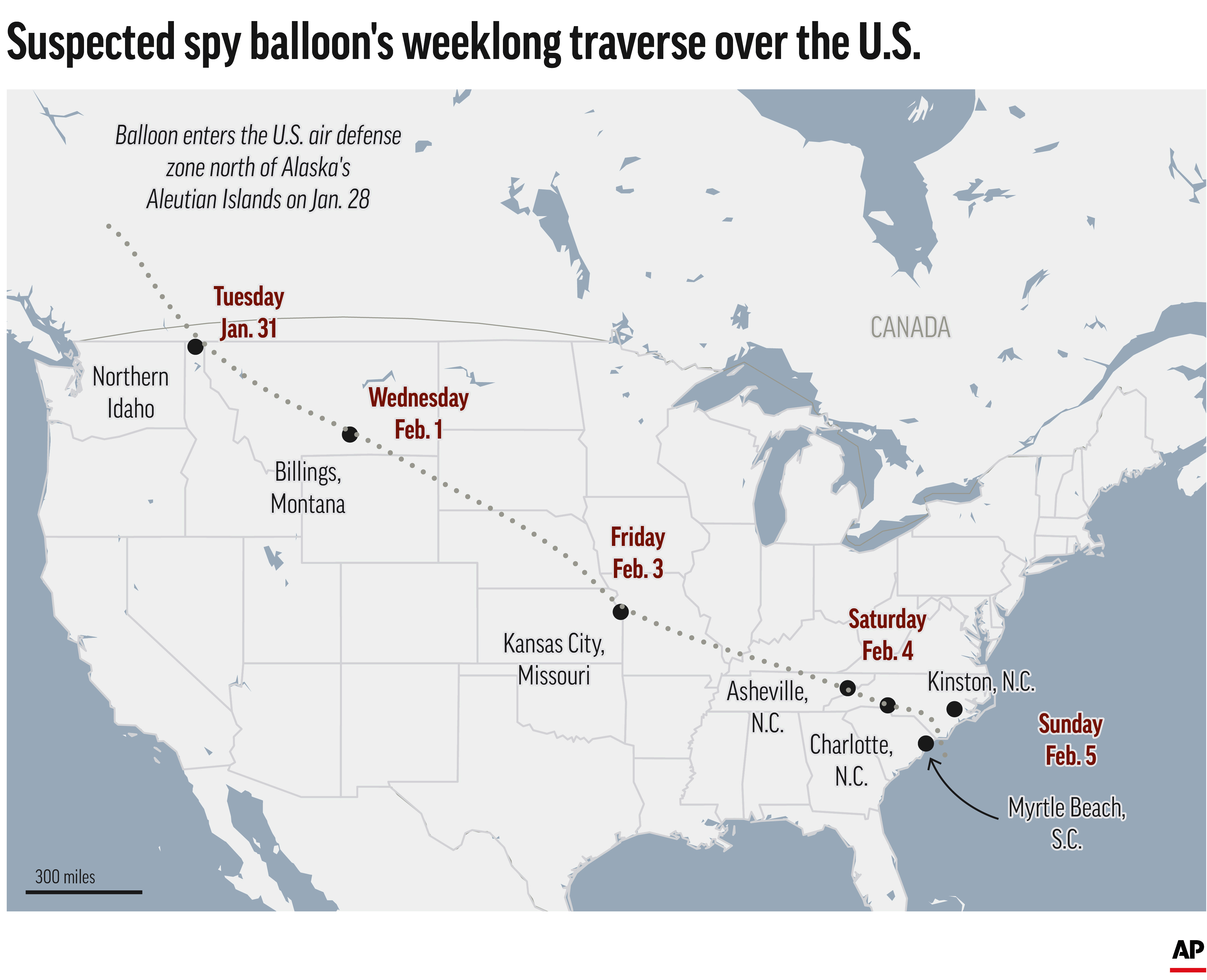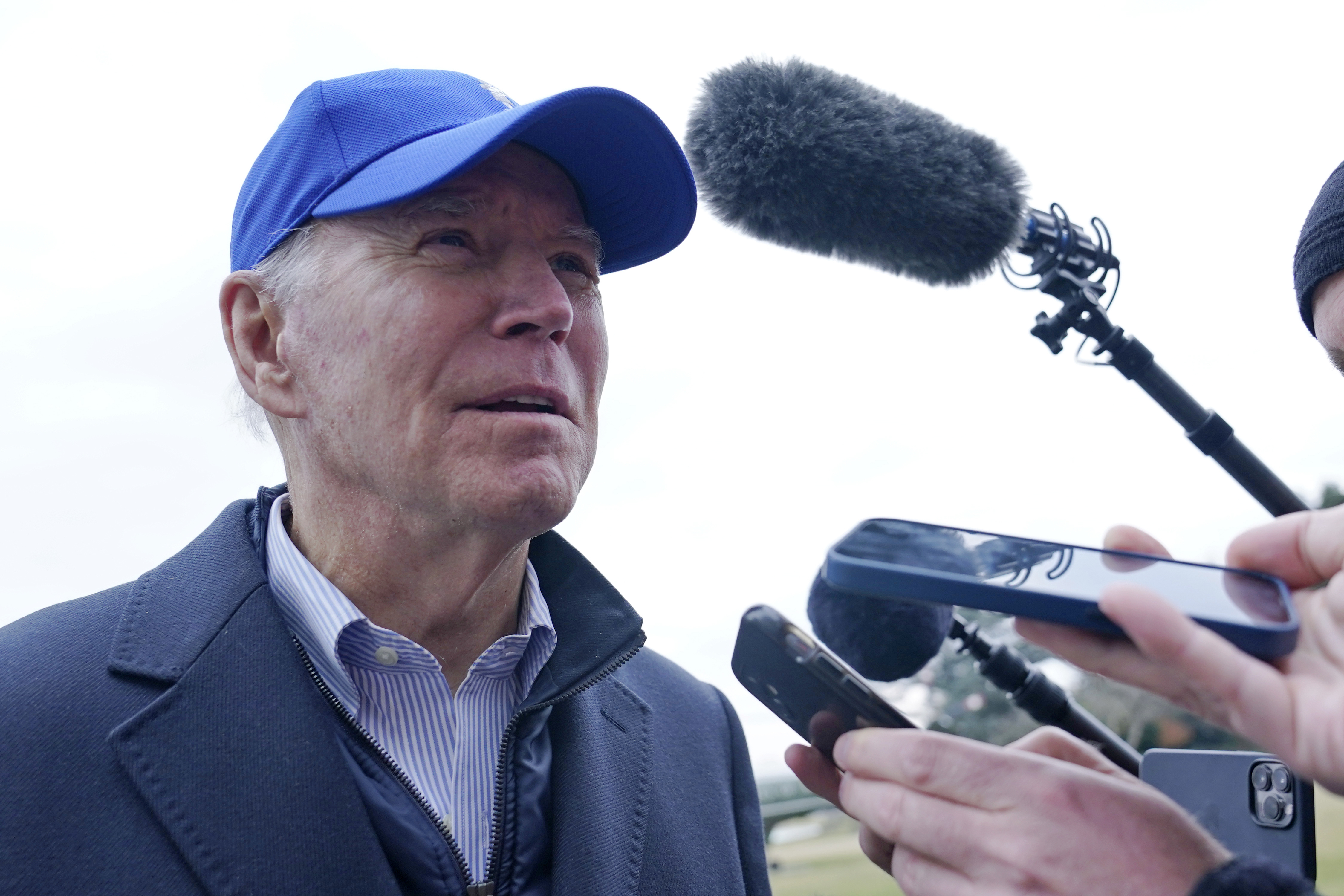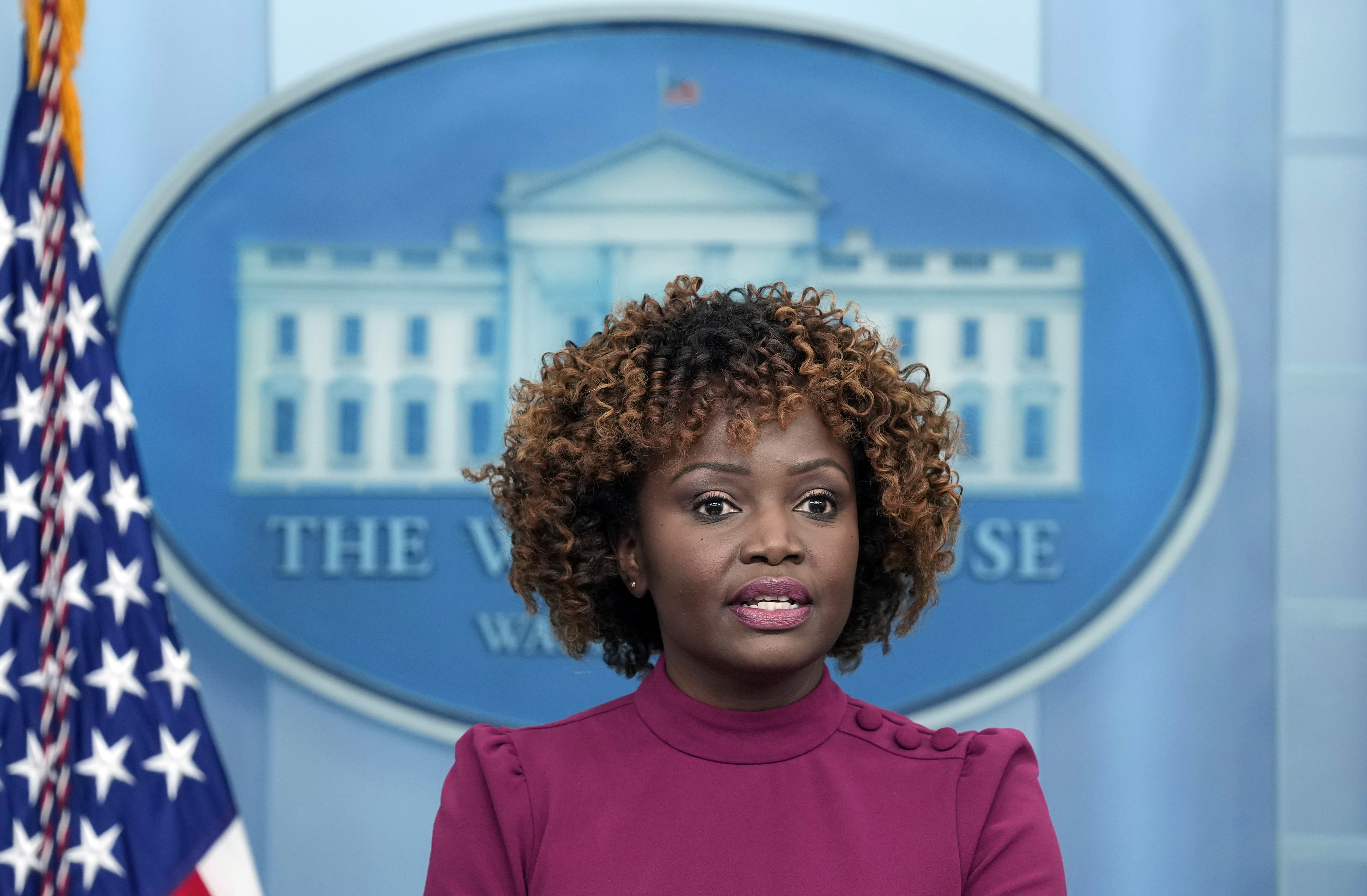WASHINGTON -- U.S. officials said Monday that improvements ordered by President Joe Biden to strengthen defenses against Chinese espionage helped identify last week's spy balloon -- and to determine that similar flights were conducted at multiple points during the Trump administration.
White House national security adviser Jake Sullivan said that after Biden took office, the U.S. "enhanced our surveillance of our territorial airspace, we enhanced our capacity to be able to detect things that the Trump administration was unable to detect."
Biden, in turn, has been faulted by some Republicans for not ordering the balloon shot down before it made its way across the U.S. Officials have said there was concern about damage to people on the ground, and Biden addressed the issue Monday.
"Once it came over to the United States from Canada, I told the Defense Department I wanted to shoot it down as soon as it was appropriate," Biden said. The military concluded that "we should not shoot it down over land; it was not a serious threat."
In a brief exchange with reporters, Biden expressed his continued displeasure with Beijing. Asked why China launched the balloon over the U.S., he replied, "Because they're the Chinese."
Sullivan, speaking at an event hosted by the U.S. Global Leadership Coalition, said as part of the surveillance improvements since Biden took office, "we were able to go back and look at the historical patterns" and uncover "multiple instances" during the Trump administration in which Chinese surveillance balloons traversed American airspace and territory.
Several Trump administration officials have have said they didn't learn of Chinese spy balloons during their tenures.
Before Monday, U.S. officials had said that at least three times during the Trump administration and at least one other time during Biden's time as president balloons have crossed American airspace, but not for this long. In those instances, the United States determined that the balloons belonged to China only after they had left U.S. airspace, said Gen. Glen VanHerck, head of U.S. Northern Command.
"I will tell you that we did not detect those threats," VanHerck said of his military command. "And that's a domain awareness gap that we have to figure out." He added that the U.S. intelligence community "after the fact" informed his command about the balloons.
Sullivan did not explain what specifically allowed the U.S. to detect and track the latest balloon where the previous administration might not have. Officials have said, without elaborating, that China has flown similar balloons over parts of five continents in recent years.
PREVIOUS INCIDENTS
The Defense Department has notified Congress of several previous incursions of U.S. airspace by Chinese surveillance balloons, with earlier sightings near Texas, Florida, Hawaii and Guam, U.S. officials said Sunday, as Republicans criticized the Biden administration for allowing a suspected surveillance balloon to track across much of the United States over the last week.
Rep. Michael Waltz, R-Fla., a member of the House Armed Services Committee, said in an interview that defense officials identified the locations in a discussion with lawmakers and staff on Saturday, disclosing for the first time that similar surveillance balloons had been spotted in U.S. airspace near the continental United States before. The existence of such balloons near Hawaii and Guam has been reported previously.
Two such incidents were reported near Florida, while there was at least one each in the other three locations, Waltz said.
The defense officials said that several of those events occurred during the Trump administration, Waltz said. Officials had also said that during a news briefing with reporters on Saturday.
The Defense Department was not specific about where in each state the previous incursions occurred, Waltz said. He added that officials did not say whether the balloons made it into U.S. airspace, which extends 12 nautical miles from the shore, or over U.S. territory, too. Fox News first reported the additional locations.
The account, verified by two U.S. officials speaking on the condition of anonymity because of the sensitivity of the issue, adds to an issue that has become vexing for the U.S. government.
One of the other officials, a congressional aide, said the disclosure came during a phone briefing with congressional leaders and national security committees. The administration official briefing them said the other incidents had mostly been along or off the coast of the United States.
Several former Trump administration officials, including former defense secretary Mark Esper, said they do not recall reports of such balloons reaching their level, raising questions about how they were handled at the time.
A senior administration official, speaking on the condition of anonymity because of the sensitivity of the issue, said Sunday that the previous occurrences were discovered after the Trump administration left office. U.S. intelligence officials are prepared to offer key officials from the Trump administration briefings about the balloon program, "which has not only violated our sovereignty but the sovereignty of countries across five continents," the official said.
The official did not explain how the information about the earlier balloons came to light, or if intelligence gleaned from the one tracked by the U.S. military over the last week played a role in better understanding China's surveillance efforts.
The newest disclosure came as U.S. Navy and Coast Guard crews worked off the Atlantic coast to recover debris from the shoot-down, including sensors. A senior U.S. military official, speaking on the condition of anonymity under rules set by the Pentagon, said the work could continue for days but will be aided by the debris landing in relatively shallow 47-foot water.
Sullivan defended Biden's decision to wait until the balloon was off the Carolina coastline before shooting it down, saying military advisers assessed that downing it over water "created a greater possibility that we could effectively exploit the wreckage than if it were shot down over land." That was in addition to the warnings from the Pentagon of a potential risk to Americans on the ground.
VanHerck described the debris spreading on the waters over "15 football fields by 15 football fields square."
"The payload itself, I would categorize that as a jet airliner type of size, maybe a regional jet. ... Probably weighed in excess of a couple thousand pounds," he said.
Sullivan said the U.S. was "still piecing through" which Chinese officials knew what about the balloon and would not speak publicly yet about U.S. assessments about China's intentions flying it over the U.S.
EARLY CONCERNS
The Biden administration had previously raised concerns about China's use of surveillance balloons with Congress, including during briefings last August, according to White House press secretary Karine Jean-Pierre.
White House National Security Council spokesman John Kirby told reporters Monday that the U.S. military had begun collecting debris from the balloon. He also confirmed that the White House has offered to brief key officials from the Trump administration, but said briefings had yet to take place.
Kirby firmly rejected Beijing's claim that the U.S. violated international law by shooting down the balloon.
"The United States, under President Biden's authority and orders acted in accordance with international law and in defense of our homeland and our sovereign airspace," Kirby said. "We were absolutely within our rights to bring down that balloon."
Kirby also dismissed China's contention that the balloon was for meteorological purposes, saying "it strains credulity ... that this was some kind of weather balloon that was floating on the winds."
VanHerck, commander of U.S. Northern Command, said the U.S. "took maximum precautions" to prevent the balloon from collecting information as it crossed the nation. He declined to provide any details on how that was done, including by the military's U.S. Strategic Command. The Navy is taking protective measures during recovery operations in case there were explosives on the balloon, he said.
He said some debris may float ashore, and he warned the public not to try to collect it.
The decision to strike the balloon when it was six miles off the coast was made after consultations with NASA, which had estimated the potential debris field due to the balloon's altitude, VanHerck said.
The Navy is also using an underwater unmanned vehicle to photograph and track debris. Monday was the first day it could be used because of rough seas, according to White House and Pentagon officials.
The White House said the balloon was a setback to already tense relations with Beijing. Secretary of State Antony Blinken was supposed to visit China but the trip was put on hold because of the incident.
White House National Security Spokesman John Kirby noted Monday that Blinken's trip was delayed, not canceled. But prospects for rescheduling remain uncertain.
"I would put this at a six" on a scale of 10, said Danny Russel, a China expert and former assistant secretary of state for East Asian and Pacific affairs in the Obama administration, on the damage to current diplomatic efforts between the two countries.
"The signals I see suggest that there has to be a pause and a line drawn under the incident but once the drama has gone through its final act, there seems to be every intention to re-engineer a trip by the secretary of state," said Russel, who is now vice president for international security and diplomacy at the Asia Society Policy Institute.
The administration will be "starting at a serious deficit," Russel said. "This is a setback but it's not impossible to see a return. Absent mismanagement, this is recoverable."
Blinken and senior Chinese officials do plan to attend at least two international gatherings -- the Munich Security Conference in mid-February and a meeting of the Group of 20 foreign ministers in India in early March -- that could provide venues for renewed engagement.
President Joe Biden and President Xi Jinping agreed to Blinken's visit during a meeting in November in Indonesia. Biden may have been hoping that his top diplomat would return from China with a measure of progress on issues ranging from trade, Indo-Pacific security and climate change to human rights and the status of Taiwan. Instead, he now faces a domestic political maelstrom just ahead of his State of the Union speech to Congress today.
Meanwhile in Beijing, after initially taking a relatively conciliatory response to the balloon, Chinese leaders have adopted a much tougher position, likely in response to nationalistic public reaction. After apologizing for the balloon, which it said was a weather craft that mistakenly strayed into U.S. airspace, China now condemns the downing as an unacceptable violation of international law and standards that has set back the potential for dialogue.
"Blinken's visit to China had offered a way to stabilize the U.S.-China relationship," said Da Wei, director of the Center for International Security and Strategy at Beijing's prestigious Tsinghua University. The postponement has now "greatly reduced" the window for that, he said.
Still, White House officials said America's China relationship is perhaps the most consequential for the United States and that communication between the two countries continues. Jean-Pierre said the incident hasn't changed Biden's focus on establishing guardrails in the often-tense relationship and acting cooperatively on some issues of mutual concern.
"It's up to China to figure out what kind of relationship that they want," she said.
Information for this article was contributed by Zeke Miller, Lolita C. Baldor, Aamer Madhani, Tara Copp, Colleen Long, Matthew Lee and Caroline Chen of The Associated Press and by Dan Lamothe, Azi Paybarahm, Todd C. Frankel, Shane Harris, John Hudson and Akilah Johnson of The Washington Post.
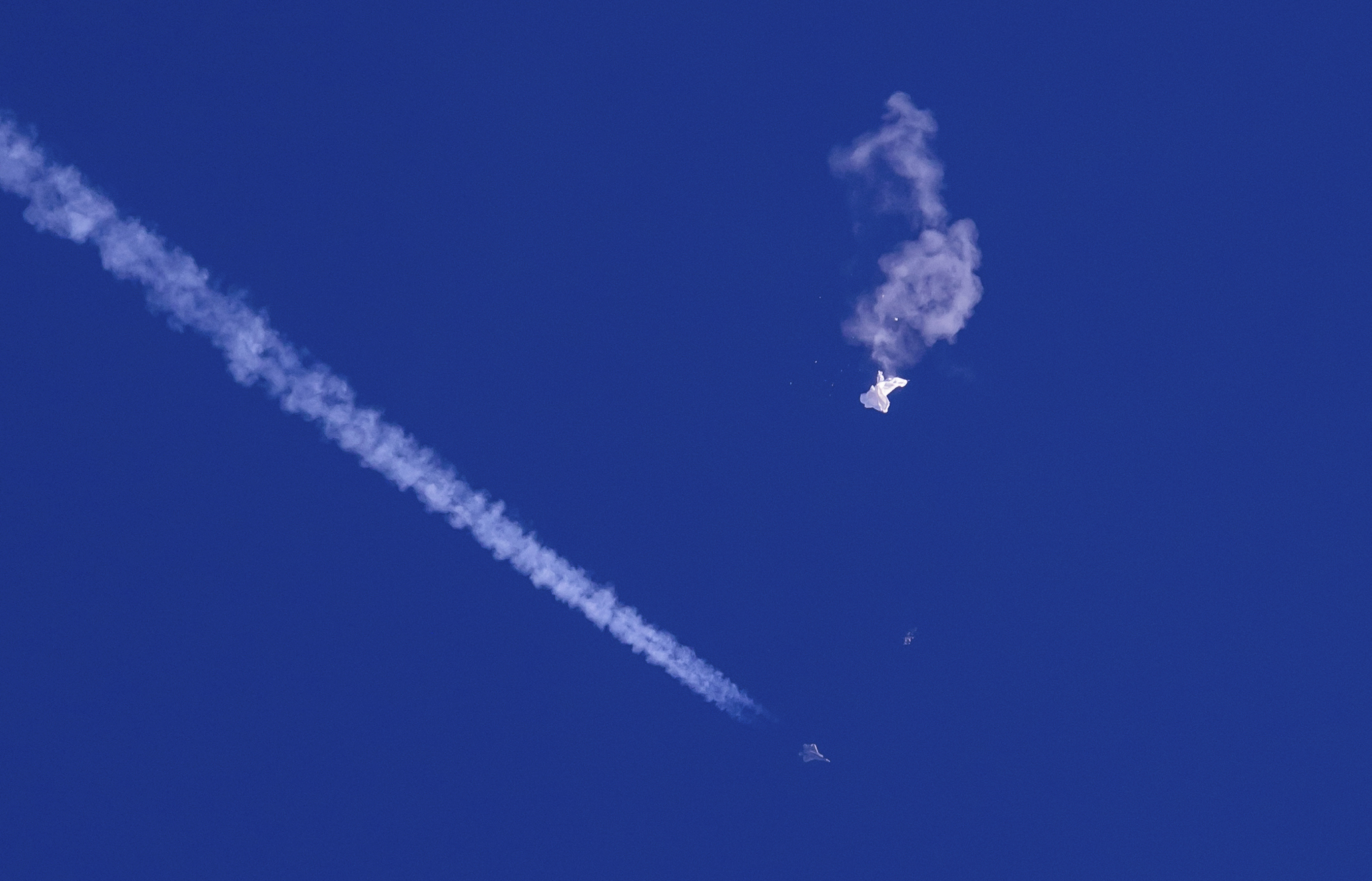 In this photo provided by Chad Fish, the remnants of a large balloon drift above the Atlantic Ocean, just off the coast of South Carolina, with a fighter jet and its contrail seen below it, Saturday, Feb. 4, 2023. The downing of the suspected Chinese spy balloon by a missile from an F-22 fighter jet created a spectacle over one of the state's tourism hubs and drew crowds reacting with a mixture of bewildered gazing, distress and cheering. (Chad Fish via AP)
In this photo provided by Chad Fish, the remnants of a large balloon drift above the Atlantic Ocean, just off the coast of South Carolina, with a fighter jet and its contrail seen below it, Saturday, Feb. 4, 2023. The downing of the suspected Chinese spy balloon by a missile from an F-22 fighter jet created a spectacle over one of the state's tourism hubs and drew crowds reacting with a mixture of bewildered gazing, distress and cheering. (Chad Fish via AP)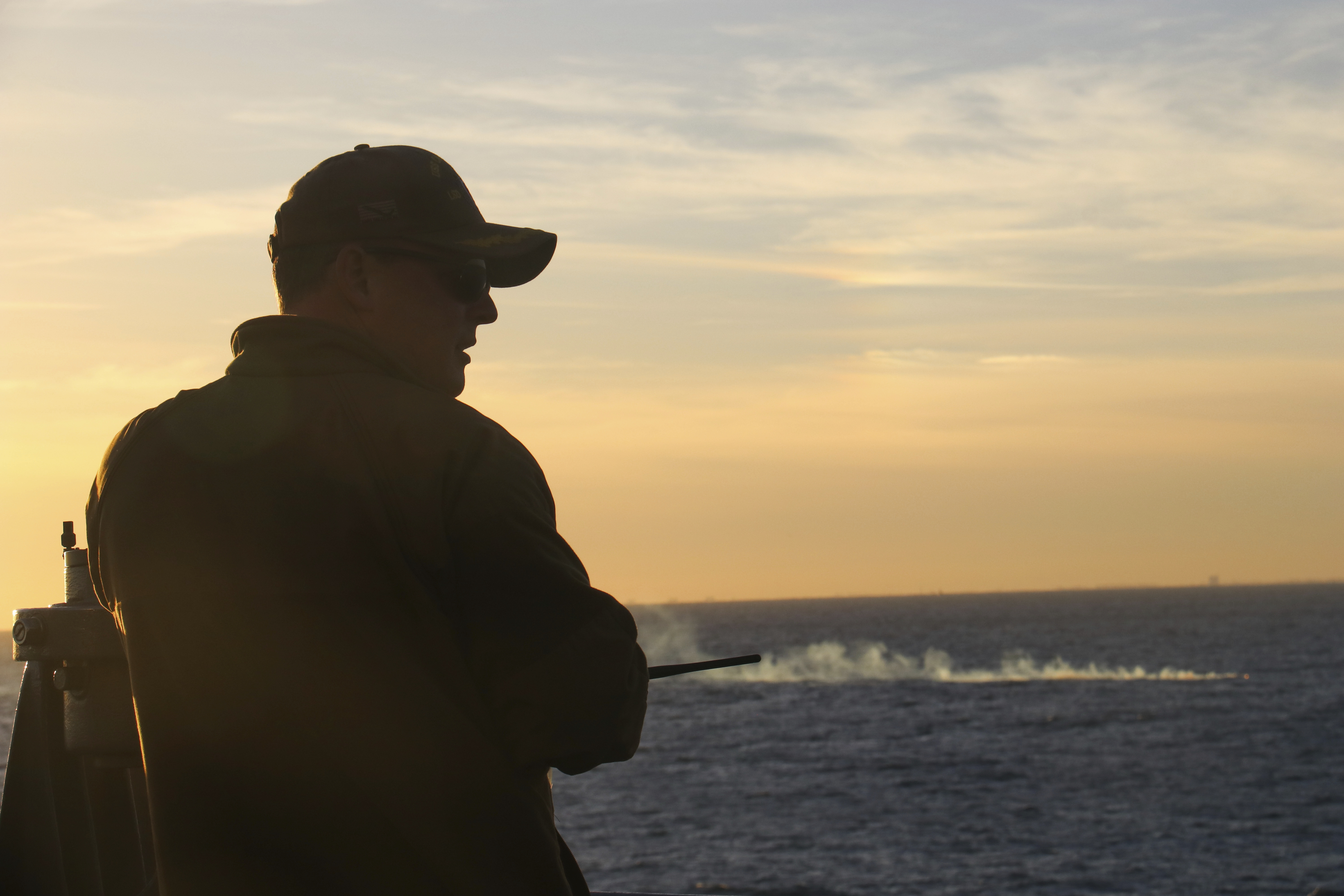 In this image provided by the U.S. Navy, Cmdr. Brad A. Fancher, commanding officer of the dock landing ship USS Carter Hall (LSD 50), observes the debris field of a high-altitude surveillance balloon Saturday, Feb. 4 2023, off the coast of South Carolina. Carter Hall is the lead ship in debris recovery efforts led by the Navy. (Jerry Ireland/U.S. Navy via AP)
In this image provided by the U.S. Navy, Cmdr. Brad A. Fancher, commanding officer of the dock landing ship USS Carter Hall (LSD 50), observes the debris field of a high-altitude surveillance balloon Saturday, Feb. 4 2023, off the coast of South Carolina. Carter Hall is the lead ship in debris recovery efforts led by the Navy. (Jerry Ireland/U.S. Navy via AP)